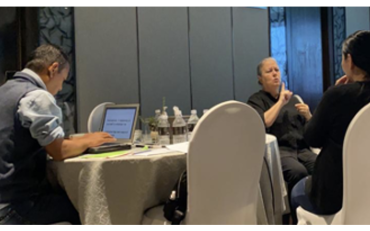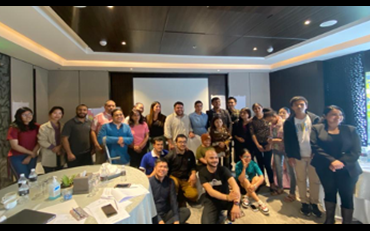The Asian Youth with Disabilities Caucus Meeting started off strong in Kathmandu, Nepal. We were happy to welcome 15 participants from cross-disability constituencies from Nepal, India, Bangladesh, Indonesia and Pakistan. They were drawn from the IDA Youth Caucus and identified by local partners like the National Federation of the Disabled Nepal (NFDN) and the National Indigenous Disabled Women’s Association (NIDWAN). The workshop was supported by UNICEF and Light for the World. Along with facilitators from the IDA Youth team and IDA Youth Committee, experts on Article 11, Climate Change and Intersectionalities were also involved in the workshop.
Youth with disabilities including indigenous, Dalit and LGBTIQ+ persons with disabilities had representation in this workshop.
Participants discussed the outcome of the Youth Global Disability Summit, the Call for Action and the UNCRPD were discussed, including the critical role that civil society and disability activists, including IDA members, played during the elaboration of the CRPD.
For most of the participants, this workshop was the first time they were learning about the UN 2030 Agenda and its 17 Sustainable Goals, with an interactive group exercise working the practical connections between the articles of the CRPD and the SDG Goals.
A key moment was around Article 11 of the CRPD, including the IASC Guidelines on inclusion of persons with disabilities in humanitarian actions, and the role of youth in the discussion ahead of climate change and climate impact.

Over the two days, the participants discussed about stigmatization of persons with disabilities, particularly misconceptions regarding what we can or cannot do. The CRPD, therefore, was collectively held as a sacred document for persons with disabilities considering its recognition of us, persons with disabilities, having inherent agency.
Participants also shared their lived experiences of how youth with disabilities are often neither visible within the mainstream youth and disability movements. At the end of the workshop, we all exchanged our hopes for the future and collectively mapped out charts with specific, measurable, achievable, tangible solutions and strategic plans for addressing them.
For further information, contact gkoca [at] ida-secretariat.org.
